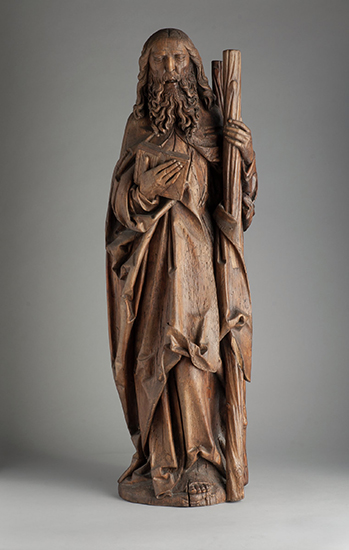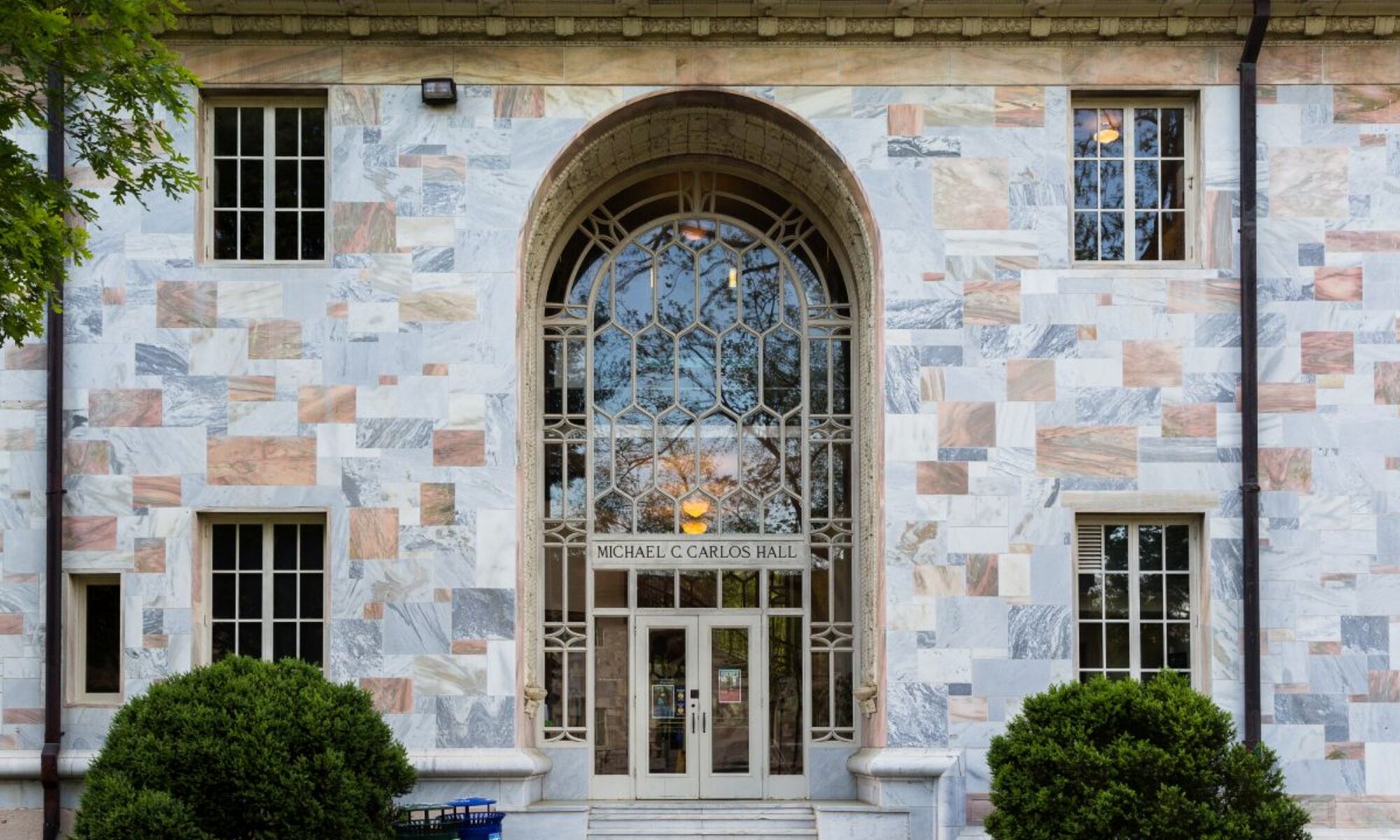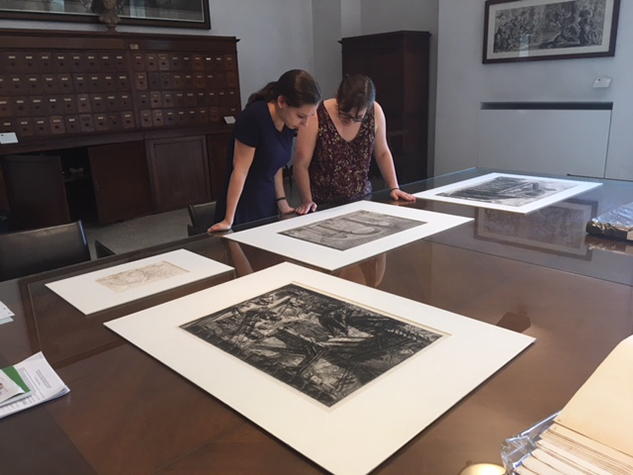
Administered by a partnership among the Art History Department and the Michael C. Carlos Museum, this fellowship brings together students, faculty, curators, and conservators. Each year, art history graduate students are awarded fellowships to work directly with objects selected in consultation with faculty and curatorial advisors, and to consider questions of authorship, manufacture, presentation, and preservation. This fellowship is primarily intended for graduate students who have completed at least their first year of studies in the Art History department.
Fellows focus on specific objects in the museum’s collections, ideally related to their doctoral research. They work with faculty, curatorial, and conservation advisors to develop questions and define the research scope. Fellows engage in independent research, which can include travel to relevant collections, institutions, or libraries in the U.S. or abroad, to examine relevant objects, consult researchers, and review documents. The faculty advisor, curator, or appropriate field expert is involved in the planning and accompanies the fellow on these research trips. Fellows also undertake a directed reading course with their faculty advisor and enroll in either Technical Art History or Issues in the Conservation of Art and Cultural Property.
Fellows’ research findings are presented at the annual Art History Graduate Symposium, a public museum event, or a professional conference.
Past Fellows
Tori Burke is a PhD student specializing in late medieval art at Emory University. She earned her MA in Art History at American University, where she focused on the English medieval church’s conception of devotional art objects for the lay public and viewer response to these objects. Prior to beginning PhD study, she held an internship position for the Medici Archive Project’s Eugene Grant Jewish History Program. As a 2023 Mellon Fellow in Object-Centered Curatorial Research, Burke will focus on a sixth to eight century CE Byzantine ivory pyxis in the Michael C. Carlos Museum’s collection with a representation of Christ and the Virgin Mary. Burke will undertake technical analysis of the condition of the pyxis, which displays an unusual, green-toned patination that may offer evidence of the object’s original function or treatment. She will also analyze iconographic resonances that exist between the pyxis and other elements of Late Antique material culture in working towards an understanding of the object’s place in the Early Christian world. Throughout the project, Burke will explore what the pyxis has to say about the development of Early Christian devotional art and concepts of materiality from Late Antique understandings of visual representation. As a 2023 Mellon Fellow in Object-Centered Curatorial Research, Tyler will study a mummy mask in the collection of the Michael C. Carlos Museum that dates to the Roman period (1st-2nd centuries CE). Made of cartonnage, a mixture of plastered linen and papyrus with a similar consistency to papier-mâché, the mask is a hybridized artwork that combines elements of Egyptian and Roman styles. Tyler plans to undertake visual and technical analyses to not only understand how the mask was produced, but to consider how Egyptian traditions adapted and persisted in the face of changing sociopolitical situations. Margaret Nagawa is a PhD student in contemporary African art at Emory University. She earned her MA degree in Curating at Goldsmiths, University of London, England, focusing on international exhibitions and artist collectives. Prior to graduate studies, Nagawa studied painting and sculpture at the Margaret Trowell School of Fine Arts, Makerere University in Kampala, Uganda, where she earned a first-class honors degree in Fine Arts. She subsequently led the Uganda Artists Association for two years and painted and curated exhibitions in Uganda and Ethiopia. In the Fall of 2021, Nagawa completed her qualifying paper titled “A Monument’s Many Lives: Constructing Meanings in Theo Eshetu’s The Return of the Axum Obelisk (2009).” As a 2022 Mellon Fellow in Object-Centered Curatorial Research, Nagawa will focus on a sketchbook in the High Museum of Art’s collection by the Senegalese-French artist Iba N’Diaye (1928-2008). An influential professor at the École de Dakar following Senegal’s independence in 1960, N’Diaye encouraged familiarity with art from other parts of Africa and Europe, as well as fluency in techniques employed to make that art. In 1993, N’Diaye completed sixty-five drawings and written notes in the sketchbook’s one-hundred pages during his visit to the Smithsonian museums in Washington, D.C. His diverse sources include Titian, the Venetian Renaissance painter; Willem de Kooning, the Dutch-American abstract expressionist; and a nineteenth-century wood sculpture attributed to the Yombe area of the Kongo culture, an area located in the present-day Democratic Republic of Congo. Nagawa will undertake visual and technical analyses of the sketchbook to examine N’Diaye’s cross-cultural artistic references and the materials and techniques he employed in compiling the book. Throughout this project, Nagawa will explore what this sketchbook tells us about N’Diaye’s work at the intersection of African, European, and North American art in their twentieth century. Christopher Askew is a PhD student specializing in ancient Roman art under the direction of Dr. Eric Varner. Prior to attending Emory University, he completed his MA in 2019 at the University of Nebraska-Lincoln where he wrote his master’s thesis on depictions of fountain-house scenes on late Archaic black-figure hydriai produced in Athens from c. 525 to 500 BCE. He obtained his BA from the University of Virginia in 2015, double majoring in History and Art History with a Religious Studies minor. In 2017 he completed his Post Baccalaureate in Classical Studies at the College of William & Mary. As a 2021 Mellon Fellow in Object-Centered Curatorial Research, Christopher will analyze a bronze statuette from the Michael C. Carlos Museum which depicts the Greco-Egyptian god Hermanubis. The object is thought to have been produced during the second century CE in the Egyptian city of Alexandria and represents the hybridized visual culture of Roman provincial art. Christopher’s project will involve an examination of the statuette’s patina using chemical testing, x-ray imaging to analyze its interior structure and joints, and the creation of a digital reconstruction of the statuette as it would have looked when complete. This project seeks to understand the physical makeup of the Hermanubis statuette in order to gain insight into the bronze production practices of ancient Alexandria and, more broadly, to document the artistic landscape of Roman Egypt during the later imperial period, a topic that has begun to garner more scholarly attention in light of renewed interest in the study of the Roman provinces. Brooke Luokkala is a PhD student focusing on the art of the ancient Americas. Primarily interested in practices of collecting, she earned her BA in Archaeological Studies from Yale University where her senior thesis “The Avery Judd Skilton Collection” won her both the Michael D. Coe (2018) prize and distinction within the major. More recently, Brooke contributed a chapter on the same subject to the upcoming Getty volume “Collecting Mexican Art before 1940” (currently being edited for publication). Before coming to Emory, Brooke worked for the Yale Peabody Museum’s Division of Anthropology where she assisted the museum in its compliance with the Native American Graves Protection and Repatriation Act (NAGPRA). As a 2021 Mellon Fellow in Object-Centered Curatorial Research, Brooke will continue to call upon her interest in researching collection histories by combining this work with the technological analysis of museum objects. Focusing on a set of seventeen pre-Columbian carved bone implements in the Michael C. Carlos Museum’s Ancient Americas Collection – so-called ‘Chavín bones’ – Brooke will investigate the specific histories of the bones and their relationship to similar specimens in both American and Peruvian institutions. Brooke will also investigate the authenticity of a number of the pieces in hopes of contributing to broader scholarly understanding of what constitutes a ‘Chavín’ bone and the bones’ place in Chavín culture. Anna McKittrick is a PhD candidate at Emory University, specializing in mid-twentieth century American art, design, and photography. She graduated summa cum laude from the College of William and Mary with a major in art history in 2014, and received her M.A. from Emory in 2019, for a qualifying paper titled “Modernity in the Photographs of Eugène Atget.” Anna’s dissertation will focus on the “‘open’ work” in mid-century American art, and will consider the practices of designers Charles and Ray Eames, sculptor Harry Bertoia, designer Florence Knoll, and architectural photographers Julius Shulman and Ezra Stoller. Anna’s 2021 Mellon Fellowship research will centrally involve a group of chairs in the Decorative Arts and Design collection at the High Museum of Art. The Eameses designed these chairs in the 1940s and 50s, and they were produced by the Herman Miller Furniture Company. The High’s collection includes a DCM (Dining Chair Metal), perhaps the most readily identifiable as an “Eames chair;” a LCW (Lounge Chair Wood), the all-plywood version of this design; a wire chair on a rocker base; and a molded plastic side chair. Each of these chairs addresses a similar set of design problems, one that is fundamental for the Eameses’ understanding of the “open” work of art. In addition to studying these pieces in light of the conceptual framework that informs Anna’s dissertation, the project will consider their production process. The Eameses’ design choices were shaped by the possibilities afforded by their materials and the available technology, and this research will consider the Eameses’ intense interest in the smallest design details and points of connection. His 2020 fellowship research focuses on a marble cinerary urn thought to come from a second- or third-century CE settlement at Corbridge in Roman Britain. For this project, he first conducts a technical investigation of the urn, specifically addressing a gypsum crust that formed on the marble surface, in order to study both the traces of tooling and the surface damage that may help to develop a conservation plan. His curatorial research then considers the urn as a dedication for a woman named Aurelia Achaica and the probable nineteenth-century discovery and display history of the urn at Alnwick Castle, England. Finally, he evaluates this provincial urn in contrast to four metropolitan Roman urns also on display in the Michael C. Carlos Museum. The aims of this project are two-fold. The first aim is to serve as a case study for conservation and treatment of ancient marble with the deposition of a gypsym crust. The broader research goal is to contribute to better understanding of how Roman funerary sculpture was manufactured and then the nature of differences between provincial versus metropolitan Roman sculptors and other stoneworkers. Her 2020 Mellon Fellowship in Object-Centered Curatorial Research focuses on two Ancient Egyptian boat models, an unusual solar barque, which contains components of another vessel, and a small skiff with two human figures. These two boats are from the centennial gift from the Georges Ricard Foundation of the Senusret Collection to the Michael C. Carlos Museum. Emily will be undertaking a technical and visual analysis of the two boats to understand the materials used and their construction. Alongside this, she will be exploring the current research on the interpretations of boat models, and other similar models found in tombs, and how this is reflected in public-facing narratives. Alexandra Zigomalas is a PhD student in Emory University’s Art History Department, specializing in Baroque painting and sculpture. She graduated summa cum laude from Stony Brook University in 2018 with a BA in history and art history. As an undergraduate student, she completed two honors theses: one about Italian Baroque sculpture and the other about print culture in seventeenth-century Connecticut. Alexandra is currently working on her qualifying paper titled “The Other Englishman: Bernini’s Bust of Thomas Baker,” which explores Gian Lorenzo Bernini’s 1638 portrait of a young English gentleman and the complex relationship between Bernini and his English patrons. As a 2020 Mellon Fellow in Object-Centered Curatorial Research, Alexandra will be working on a painting in the High Museum of Art’s collection titled Portrait of a Boy in a Hunting Costume (ca. 1675) that is attributed to the esteemed portraitist Sir Peter Lely (1618-1680). The painting depicts an adolescent dressed in an ornate hunting costume. Lely has captured a moment of rest during the boy’s adventurous hunt, which is signaled by the upright arrow behind him. While the boy’s loyal hound is unperturbed by the viewer’s presence, the youth engages with the spectator, inviting us to enter his imagined, pastoral world. Alexandra’s project will examine this painting’s position in Sir Peter Lely’s oeuvre and the artist’s process of creating portraits of noble sitters in Restoration England. Her 2019 Mellon Fellowship in Object-Centered Curatorial Research focuses on a pair of bronze and silver mule-head fulcra, or headrest attachments, from a Hellenistic couch. She is considering how the objects were made and attached to an ancient couch, as well as their context in the ancient domestic space. This project will contribute to the study of ancient furniture and techniques of Greco-Roman bronzeworking. As an Object-Based Curatorial Research Fellow, Elizabeth is working with Dr. Rebecca Stone and Dr. Robert Pickering to analyze the Michael C. Carlos Museum’s collection of ancient West Mexican ceramics for traces of their original shaft tomb contexts. At the High Museum of Art, Elizabeth is working with Modern and Contemporary Art curator Michael Rooks to conserve, reinstall, and produce original scholarship on Michael Heizer’s wooden sculpture Circle (1976). For her Graduate Fellowship in Object-Centered Curatorial Research she is researching the prints of master eighteenth-century etcher, Giovanni Battista Piranesi. Her work on prints held by Emory University’s Michael C. Carlos Museum is advised by curator Andi McKenzie. Abbey is conducting additional research on several volumes authored and etched by Piranesi in Emory’s Stuart A. Rose Manuscript, Archives, and Rare Book Library. At the High, Abbey is producing original scholarship on an eighteenth-century Rhode Island door frame in the Decorative Arts and Design collection under the direction of curators Kevin Tucker and Stephanie Heydt. Over the course of her MOCR Fellowship, Annie will be conducting research at the High Museum on Giovanni Battista Gaulli’s The Thanksgiving of Noah, and The Sacrifice of Abraham (c. 1700) in the European Art department with consulting curator Bill Pressley. She will be focusing on issues of patronage and provenance. Her secondary object is an ekori headdress created by the Himba people of Namibia at Emory University’s Michael C. Carlos Museum With the help of curator Amanda Hellman and conservator Renee Stein, Annie is focusing on issues of conservation and display. For her Graduate Fellowship in Object-Based Curatorial Research she studied a small panel painting in the High Museum. The work is entitled ‘The Nurture of Jupiter’ and was painted by the Dutchman Nicolaes Pietersz. Berchem in the second half of the 17th century. Her research focused on the relationship between six unique paintings by Berchem, which all depict the myth of the nurture of Jupiter. She was supported in her research by Dr. William Pressly. At the Michael C. Carlos Museum, she worked with curator Amanda Hellman to discover more about a Dan mask and costume from Liberia. Over the course of her Mellon fellowship, Rachel studied a Hellenistic gold-band glass alabastron on loan at the Michael C. Carlos Museum. Using the vessel as a springboard for understanding Classical luxury glasswares at both compositional and conceptual levels, Rachel worked with Dr. Jasper Gaunt and conservator Renee Stein, and presented her findings at the triennial meeting of the Association Internationale pour l’Histoire du Verre in September of 2018. Her secondary project at the High Museum of Art, under the supervision of curator Carol Thompson, focused on a karan-wemba mask figure from Burkina Faso. For her Mellon fellowship, Courtney studied Gerrit Rietved’s “Red and Blue Chair,” in the collection of the High Museum of Art, one of only five from the 1920s and one of the last chairs to be made by Rietveld himself. Her secondary project was to assist with organizing an upcoming exhibition of works by Andy Warhol at the Carlos Museum. Courtney worked alongside Associate Curator of Works on Paper Andi McKenzie and Conservator Liz Schulte to develop concepts for the show, choose prints and photographs that may be of special interest, and research the artist’s materials and methods. As a Mellon Graduate Fellow in Object-Centered Curatorial Research, Julianne used Reflectance Transformation Imaging (RTI) to study the preliminary sketch lines on pottery fragments by the late archaic Athenian cup-painter, Onesimos, at the Carlos Museum, under the guidance of Dr. Jasper Gaunt. She was able to travel to collections across the U.S. and Europe in order to conduct RTI on cups and fragments attributed to Onesimos. For her secondary project, Julianne focused on a recent acquisition at the High Museum, a collage by Romare Bearden, Artist with Painting and Model, from his Profile/Part II, The Thirties series. Under the direction of Dr. Stephanie Heydt, she researched and located the collages in the Profile/Part I and II collage series while considering how they fit within his career-long interest in serial works. Nicole received the Mellon fellowship in 2016 to determine the origins of the so-called “Lyman Madonna,” a thirteenth-century statue of the Virgin and Child that had recently been donated to the Michael C. Carlos Museum. She worked on this project primarily with Renée Stein, Chief Conservator of the Carlos Museum. For her secondary object, she worked with curator Sarah Schleuning on a nineteenth-century Eastern Tennessee pie safe, tracing the development and meaning of its painted iconography. Her primary project for the Mellon fellowship was a painting of Christ and the Samaritan Woman by Guercino in the High Museum of Art. Over the course of the year, she worked closely with the conservation team at the Atlanta Art Conservation Center and the Michael C. Carlos Museum to gather enough technical evidence to confirm that this painting, long believed to be a workshop copy, is indeed a Guercino original. For her secondary object, Kimberly worked with curator Amanda Hellman on a pair of schrimshawed Nguni cattle horns in the Michael C. Carlos Museum. For her Mellon Fellowship research, Ashley examined the Head of a Goddess, a second-century BCE marble head in the Michael C. Carlos Museum, and William Wetmore Story’s Jerusalem in Her Desolation, a nineteenth-century neoclassical sculpture at the High Museum. The Head of a Goddess documents the complex interactions between Greece and Rome in the second century BCE, while Jerusalem exhibits the numerous sources – both ancient and modern – that influenced an important neoclassical sculptor. Ashley had the distinct pleasure of working with Jasper Gaunt, Ancient Greek and Roman curator at the Carlos, and Stephanie Heydt, American Art curator at the High. For the Mellon Graduate Fellowship, Laura’s primary project focused on a panel attributed to Giovanni Francesco da Rimini, the Madonna Adoring the Christ Child (c. 1460), now at the High Museum in Atlanta. In addition to the Atlanta panel, there are two very similar Adoration panels attributed to Francesco, one in the Pinacoteca in Bologna, and another in the Tesée Museum in Le Mans. The intention of this project was twofold: to investigate how early twentieth-century connoisseurship created artists and assigned them oeuvres, and to consider the similarities in the three panels as evidence of workshop practices that re-used and adapted shared material. Working with curator Jasper Gaunt, Laura’s second project focused on two marble acanthus reliefs produced by the same Roman workshop active in the first century CE survive today: one in the Michael C. Carlos Museum in Atlanta, and the other, in the courtyard of Bramante’s Tempietto in San Pietro in Montorio, Rome. John’s primary object for study was a set of eight small sixteenth-century paintings in tempera on panel featuring saints displayed in classicizing architectural niches. His research focused on the contributions of the eminent twentieth-century art historian Roberto Longhi (1890-1970). His secondary object is a set of two Coptic textile fragments from the Michael C. Carlos museum’s department of Egyptian antiquities. The Mellon fellowship provided John with the opportunity to research the fragments with the intention of identifying their materials, production techniques, and original contexts. Catherine’s fellowships in the High’s Photography Department were conducted under the guidance of curator Brett Abbott, former Donald and Marilyn Keough Family Curator of Photography and Head of Collections. With Brett, she completed her primary project on the Color Light Abstractions (1960-65) of photographer Wynn Bullock. Little scholarship exists on Bullock’s color photography, so in charting an introductory study of these works Catherine sought to clarify the artist’s intentions and methods of production. Catherine’s secondary project as a MOCR fellow focused on the work of contemporary designer, Johanna Grawunder. For this project, Catherine worked under the direction of curator Sarah Schleuning and interviewed Grawunder to learn more about the unique design of her multi-colored, illuminated piece, Mirror of Italy (Specchio d’Italia) (2005). As part of her fellowship, Kira worked with Dr. Stephanie Heydt to research the High Museum’s collection of William Wetmore Story sculptures, focusing on Hero Searching for Leander (1858) and Medea (1864). Story was one of the most well-connected and educated members of Rome’s American expatriate community; Kira’s findings proved that he both used his considerable knowledge of the classical world when designing his sculptures and worked as an antiquities broker and restorer for the British Museum. Kira also conducted research into the authenticity of an African terracotta figure from the Nok civilization (c. 1000 BCE) with Dr. Carol Thompson. Working closely with conservators Elizabeth Kaiser Schulte and Renee Stein and the High Museum’s chief curator David Brenneman, Andi carefully analyzed the technical aspects of an engraving entitled Lo Stregozzo (The Witch’s Procession or the Carcass), created ca. 1525. Andi concluded that the engraving is indeed by the hand of Agostino Veneziano rather than the master Marcantonio Raimondi. For her secondary project, working with conservator Renee Stein and painting conservator Larry Shutts the team set out to determine what treatment Alexander Calder’s Untitled, a painted metal mobile from 1948, needed in order for the sculpture to be exhibited in the High’s galleries. The projects were completed under the supervision of David Brenneman, chief curator at the High, and Sarah Schleuning, curator of decorative arts. Renée Stein, conservator of Emory’s Michael C. Carlos Museum, arranged for a visit to the Atlanta Art Conservation Center, where the Christ Carrying the Cross panel was examined under magnification, UV light, and fluorescence spectroscopy. The grant also funded several weeks abroad, including a visit to the Rijksbureau voor Kunstgeschichte Documentatie in The Hague, the Groniger Museum of Contemporary Art in the northern Netherlands, an interview with Joris Laarman and private tour of his factory in Amsterdam, a visit to Munich’s Bavarian National Museum, and consultations with curators at the Vienna Kunsthistorisches Museum, the Belvedere, and the German National Museum in Nuremberg. The research on Christ Carrying the Cross has since been published: “Cycles of Memory and Circular Compassion in a Germanic Passion Diptych.” Journal of Historians of Netherlandish Art 10:1 (Winter 2018) DOI: 10.5092/jhna.2018.10.1.1 . For her Graduate Fellowship in Object-Based Curatorial Research she researched the under-life-size terracotta portrait bust of Antoine-René de Voyer d’Argenson (1722–1787), known as the Marquis de Paulmy (c. 1675). Working under the guidance of David Brenneman, Director of Collections and Frances B. Bunzl Family Curator of European Art, she focused on questions of biography, attribution, and technical study. She also investigated three photographic prints – Palma Cuernavaca, (1925); Shells, (1927); and North California, (1937) by the California photographer Edward Weston (1886–1958) working with Brett Abbott, the Donald and Marilyn Keough Family Curator of Photography. For both her primary and secondary objects Ashley worked closely with former High Museum Curator of European Art, David Brenneman, Curator of American Art Stephanie Heydt, and Michael C. Carlos Museum conservator Renee Stein. For her primary object, she studied Riemanschneider’s St. Andrew from 1505. Ashley focused on questions of attribution, workshop practices, initial context, and whether or not the sculpture was originally polychrome. Notably, Ashley uncovered evidence of sixteenth-century polychrome on the statue of St. Andrew and hypothesized about the original state of the sculpture and the degree to which it was painted. Her secondary object, Benjamin West’s Arethusa presented a different set of questions centered on conservation, provenance, and the placement of this painting within West’s oeuvre.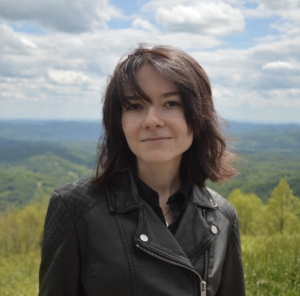
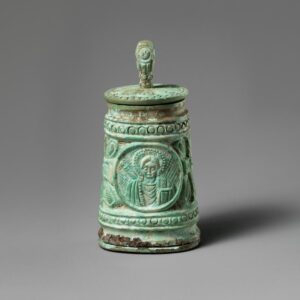
 Tyler Holman is a PhD student in Roman art at Emory University. His research focuses on hybridity in the art of Rome and its provinces, especially Roman Egypt. He graduated summa cum laude with a BA in history from the University of North Georgia in 2019, with a minor in Anthropology. Tyler is currently working on his qualifying paper, which examines the influence of Roman portraiture on the funerary art of Roman Egypt.
Tyler Holman is a PhD student in Roman art at Emory University. His research focuses on hybridity in the art of Rome and its provinces, especially Roman Egypt. He graduated summa cum laude with a BA in history from the University of North Georgia in 2019, with a minor in Anthropology. Tyler is currently working on his qualifying paper, which examines the influence of Roman portraiture on the funerary art of Roman Egypt.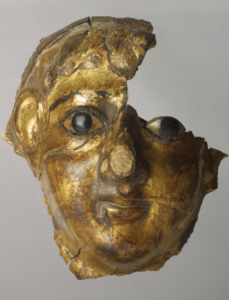
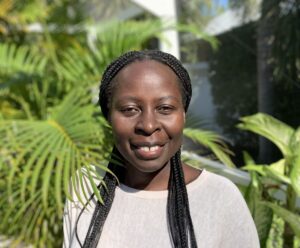
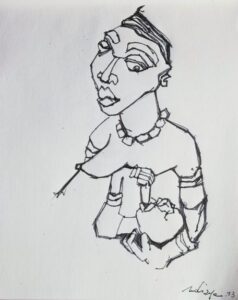
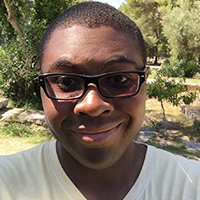
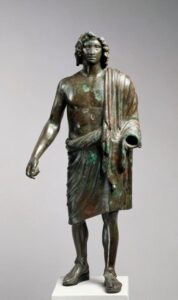
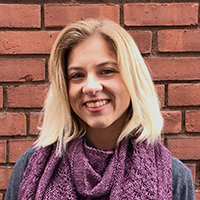
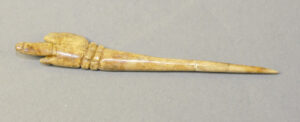
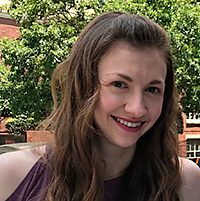
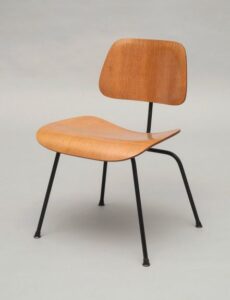
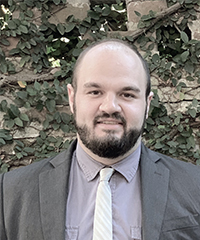 Cody Houseman is a PhD candidate specializing in ancient Roman and Greek art. His dissertation “Roman Imperial Cinerary Urns: Production and Display” explores through technical analysis the manufacture, use, and display of imperial Roman marble cinerary urns, decorative funerary vessels made to hold cremated remains of individuals from all social strata in metropolitan Rome. Cody previously obtained his MA in art history from Emory University after writing a thesis on the programmatic expropriation of equestrian imagery by the Flavian emperors of Rome. Prior to that, he earned an MA in Classical Studies from the University of Florida and his BA degrees in both Latin and international affairs from the University of Georgia.
Cody Houseman is a PhD candidate specializing in ancient Roman and Greek art. His dissertation “Roman Imperial Cinerary Urns: Production and Display” explores through technical analysis the manufacture, use, and display of imperial Roman marble cinerary urns, decorative funerary vessels made to hold cremated remains of individuals from all social strata in metropolitan Rome. Cody previously obtained his MA in art history from Emory University after writing a thesis on the programmatic expropriation of equestrian imagery by the Flavian emperors of Rome. Prior to that, he earned an MA in Classical Studies from the University of Florida and his BA degrees in both Latin and international affairs from the University of Georgia.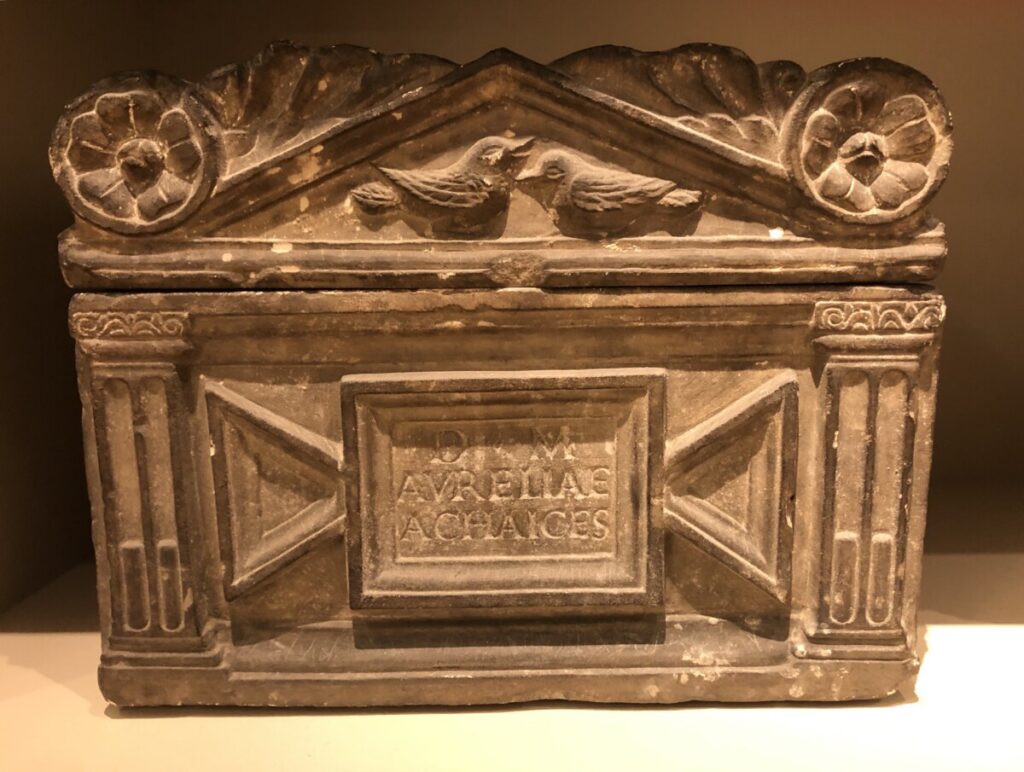
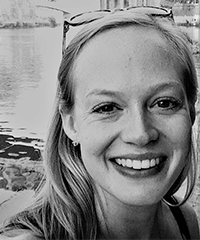 Haley S. Pierce is a PhD student at Emory University, specializing in late 19th and early 20th-century European art. She earned her MA from the Institute of Fine Arts at New York University, where she completed her masters thesis marked for distinction, titled “Illustrative Painting: The Influence of Printmaking in Fin-de-siècle France.” She received her BA from the College of Charleston, majoring in Art History with minors in Studio Art and French. Haley has also held multiple curatorial internships at institutions including The Metropolitan Museum of Art, The Solomon R. Guggenheim Museum, and the Whitney Museum of American Art, as well as gained professional experience working in the Impressionist and Modern Art department at Christie’s in New York.
Haley S. Pierce is a PhD student at Emory University, specializing in late 19th and early 20th-century European art. She earned her MA from the Institute of Fine Arts at New York University, where she completed her masters thesis marked for distinction, titled “Illustrative Painting: The Influence of Printmaking in Fin-de-siècle France.” She received her BA from the College of Charleston, majoring in Art History with minors in Studio Art and French. Haley has also held multiple curatorial internships at institutions including The Metropolitan Museum of Art, The Solomon R. Guggenheim Museum, and the Whitney Museum of American Art, as well as gained professional experience working in the Impressionist and Modern Art department at Christie’s in New York.
As a 2020 Mellon Fellow in Object-Centered Curatorial Research, Haley will be focusing on a painting by Henri Matisse, Femme assise devant son piano, which was recently gifted to the High Museum of Art as part of the Doris and Shouky Shaheen Collection. Her project seeks to conduct a close examination of the painting and its role as a study for a number of other works by Matisse completed in 1924, in order to better understand the artist’s process and method of working through a repeated subject.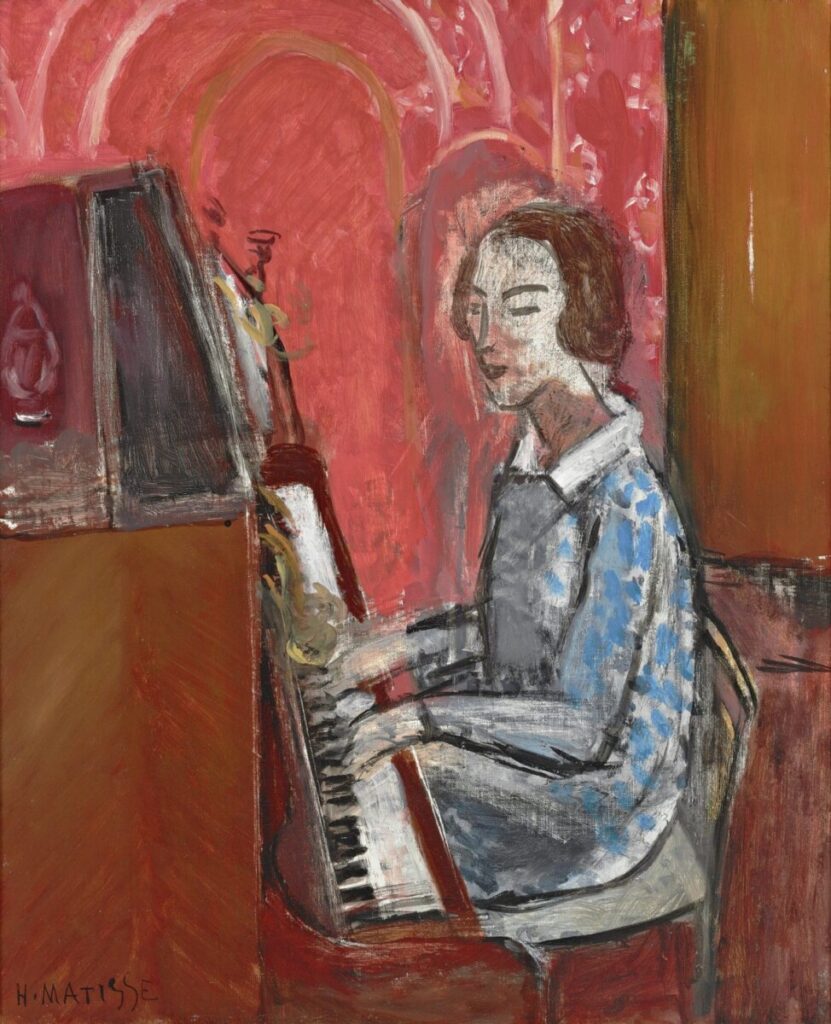
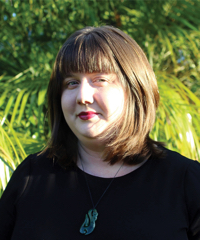 Emily Whitehead is a PhD student at Emory University, specialising in Ancient Egyptian art. She completed her Master of Arts in Ancient History, with first class honours, at the University of Auckland, New Zealand, as a Faculty Scholar with a thesis entitled “The Coffins of Sen and Gua: A discussion of the layout of the interior and exterior decoration, exploring the connection between the inner and outer coffins of two Middle Kingdom individuals.” She received her BA, majoring in Anthropology and Ancient History, and her BA(Hons), with first class honours in Ancient History also from the University of Auckland. Through these degrees, she has extensively studied Old, Middle and Late Egyptian, including hieratic scripts; archaeological methods and theories; and the art, history and archaeology of Ancient Greece and Ancient Egypt.
Emily Whitehead is a PhD student at Emory University, specialising in Ancient Egyptian art. She completed her Master of Arts in Ancient History, with first class honours, at the University of Auckland, New Zealand, as a Faculty Scholar with a thesis entitled “The Coffins of Sen and Gua: A discussion of the layout of the interior and exterior decoration, exploring the connection between the inner and outer coffins of two Middle Kingdom individuals.” She received her BA, majoring in Anthropology and Ancient History, and her BA(Hons), with first class honours in Ancient History also from the University of Auckland. Through these degrees, she has extensively studied Old, Middle and Late Egyptian, including hieratic scripts; archaeological methods and theories; and the art, history and archaeology of Ancient Greece and Ancient Egypt.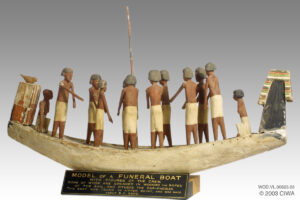
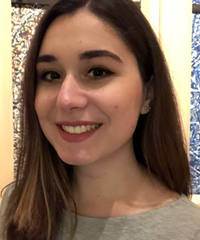
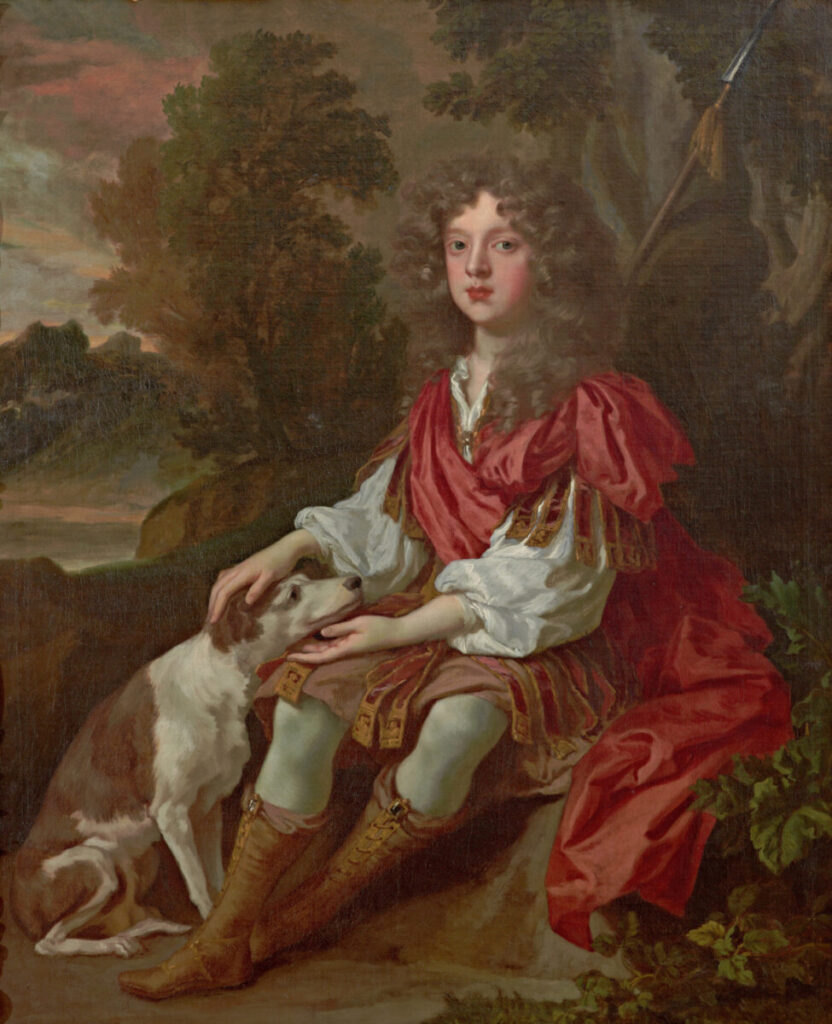
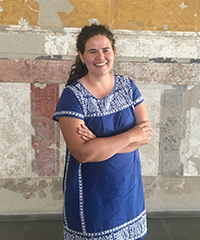 Ellen Archie is a PhD student at Emory University, specializing in Hellenistic art. She completed her MA from the Institute of Fine Arts, New York University: her Master’s Thesis was titled “The Triumph of Tryphe: Dionysian Imagery on Luxury Arts from Ptolemaic Egypt.” She received her BA at Washington and Lee University, in Lexington, Virginia where she majored in Art History and Classics. She has worked on archeological projects at the Athenian Agora in Athens, Greece; Selinunte, Italy; and the Sanctuary of the Great Gods, Samothrace, Greece.
Ellen Archie is a PhD student at Emory University, specializing in Hellenistic art. She completed her MA from the Institute of Fine Arts, New York University: her Master’s Thesis was titled “The Triumph of Tryphe: Dionysian Imagery on Luxury Arts from Ptolemaic Egypt.” She received her BA at Washington and Lee University, in Lexington, Virginia where she majored in Art History and Classics. She has worked on archeological projects at the Athenian Agora in Athens, Greece; Selinunte, Italy; and the Sanctuary of the Great Gods, Samothrace, Greece.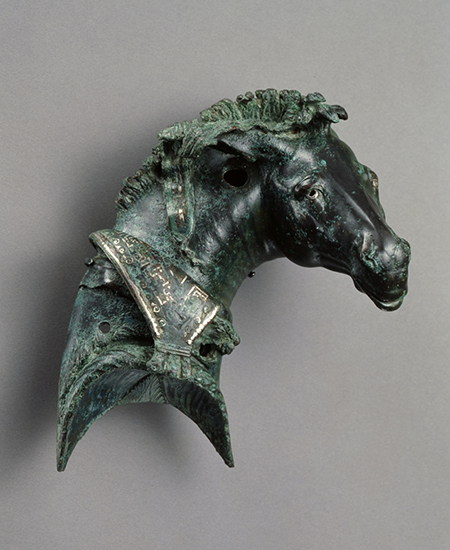
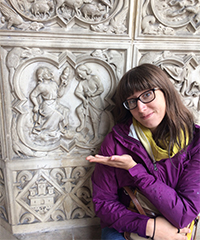 Kelin Michael is a PhD candidate in medieval art history at Emory University. She completed her masters thesis entitled “The Effect of Location on the Function of the Genealogy of Christ Stained Glass Series of Canterbury Cathedral” and received her MA from Emory in Summer 2017. Since then, she has completed a summer research assistantship at the Whitney Western Art Museum, resulting in the upcoming published chapter titled “Style, Composition, and Subject Matter: Joseph Henry Sharp and the Influence of European Artistic Training.” She also recently co-curated an exhibition for Emory’s Pitts Theology Library titled The Materiality of Devotion: From Manuscript to Print, which opened in December 2018. Finally, she has recently begun work on her dissertation which will explore the reception of Hrabanus Maurus’s work of figured poems, In honorem sanctae crucis.
Kelin Michael is a PhD candidate in medieval art history at Emory University. She completed her masters thesis entitled “The Effect of Location on the Function of the Genealogy of Christ Stained Glass Series of Canterbury Cathedral” and received her MA from Emory in Summer 2017. Since then, she has completed a summer research assistantship at the Whitney Western Art Museum, resulting in the upcoming published chapter titled “Style, Composition, and Subject Matter: Joseph Henry Sharp and the Influence of European Artistic Training.” She also recently co-curated an exhibition for Emory’s Pitts Theology Library titled The Materiality of Devotion: From Manuscript to Print, which opened in December 2018. Finally, she has recently begun work on her dissertation which will explore the reception of Hrabanus Maurus’s work of figured poems, In honorem sanctae crucis.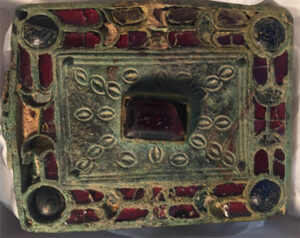
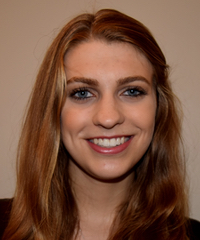 Elizabeth Caris is a graduate student studying ancient American art, specifically central Andean ceramics. Before coming to Emory, Elizabeth received a bachelor’s degree in art history and archaeology from Johns Hopkins University. Elizabeth has also completed internships in curatorial departments at the Peabody Museum of Archaeology and Ethnology at Harvard University, the Walters Art Museum, and the Michael C. Carlos Museum at Emory University. She recently assisted with the installation, didactics, and online catalogue for the Michael C. Carlos Museum exhibition Threads of Time: Tradition and Change in Indigenous American Textiles.
Elizabeth Caris is a graduate student studying ancient American art, specifically central Andean ceramics. Before coming to Emory, Elizabeth received a bachelor’s degree in art history and archaeology from Johns Hopkins University. Elizabeth has also completed internships in curatorial departments at the Peabody Museum of Archaeology and Ethnology at Harvard University, the Walters Art Museum, and the Michael C. Carlos Museum at Emory University. She recently assisted with the installation, didactics, and online catalogue for the Michael C. Carlos Museum exhibition Threads of Time: Tradition and Change in Indigenous American Textiles.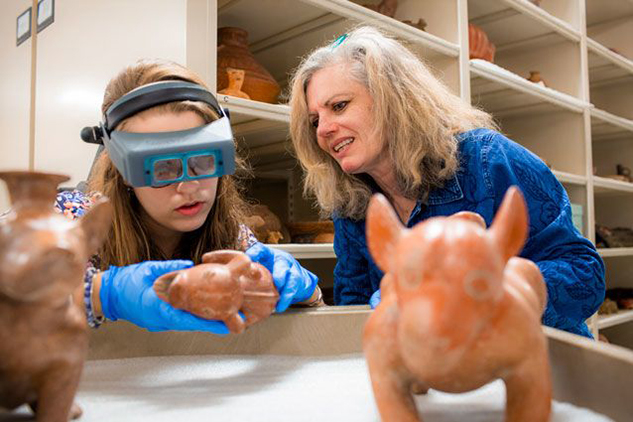
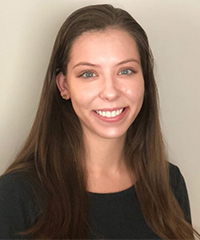 Abbey Hafer is a graduate student in the Art History Department at Emory University where she is pursuing a PhD in Italian Baroque art and architecture under the direction of Dr. Sarah McPhee. Abbey graduated summa cum laude from Case Western Reserve University in 2015 with a BA in Art History and Dance. Upon graduation she was awarded the Muriel S. Butkin Art History Award and the Lily Dreyfuss Memorial Award in Dance. She has held internships at the Saint Louis Art Museum and has been involved with multiple digital humanities projects at Emory.
Abbey Hafer is a graduate student in the Art History Department at Emory University where she is pursuing a PhD in Italian Baroque art and architecture under the direction of Dr. Sarah McPhee. Abbey graduated summa cum laude from Case Western Reserve University in 2015 with a BA in Art History and Dance. Upon graduation she was awarded the Muriel S. Butkin Art History Award and the Lily Dreyfuss Memorial Award in Dance. She has held internships at the Saint Louis Art Museum and has been involved with multiple digital humanities projects at Emory.
 Annie Maloney received her BA in art history in 2014 from Boston College. At Boston College, she received the Jeffery Howe Art History award for her senior thesis, which focused on the frescoes of Giovanni Battista Gaulli, and his application of Bernini’s theories on monumental painting. Annie entered Emory University’s art history PhD program as a George W. Woodruff Fellow in 2015 to continue studying seventeenth century Italian painting with Sarah McPhee. Last year she completed her qualifying paper, “Bernini’s La Predica della Battista: An Epideictic Image.” Annie’s research interests include Baroque painting, early modern image theory, Jesuit patronage, drawing, emblematics, early modern print culture, and urbanism in Rome.
Annie Maloney received her BA in art history in 2014 from Boston College. At Boston College, she received the Jeffery Howe Art History award for her senior thesis, which focused on the frescoes of Giovanni Battista Gaulli, and his application of Bernini’s theories on monumental painting. Annie entered Emory University’s art history PhD program as a George W. Woodruff Fellow in 2015 to continue studying seventeenth century Italian painting with Sarah McPhee. Last year she completed her qualifying paper, “Bernini’s La Predica della Battista: An Epideictic Image.” Annie’s research interests include Baroque painting, early modern image theory, Jesuit patronage, drawing, emblematics, early modern print culture, and urbanism in Rome.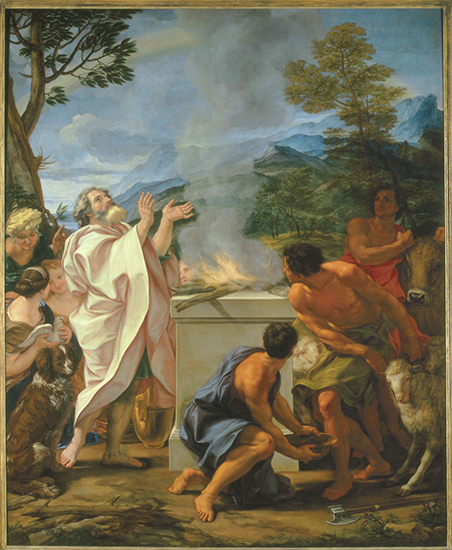
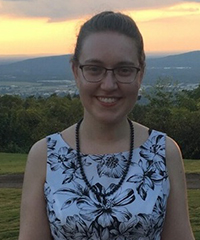 Emma C. de Jong is a graduate student in Art History at Emory University with a focus on 16th and 17th century Northern European prints. Her academic advisor is Dr. Walter Melion. In 2014 she obtained her B.A. in History of Art at the University of York, in the UK. For her BA thesis on Goltzius’s Metamorphoses print series she received the award for best undergraduate thesis. A year later she completed her MA in Art History, Curatorship and Renaissance Culture at the Warburg Institute in London, UK.
Emma C. de Jong is a graduate student in Art History at Emory University with a focus on 16th and 17th century Northern European prints. Her academic advisor is Dr. Walter Melion. In 2014 she obtained her B.A. in History of Art at the University of York, in the UK. For her BA thesis on Goltzius’s Metamorphoses print series she received the award for best undergraduate thesis. A year later she completed her MA in Art History, Curatorship and Renaissance Culture at the Warburg Institute in London, UK.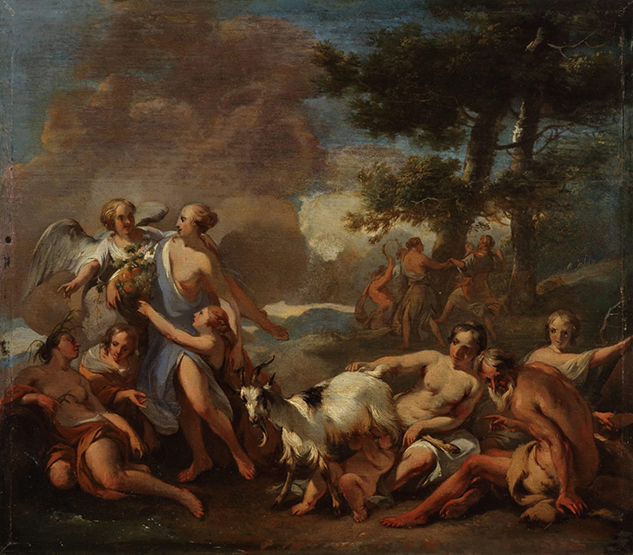
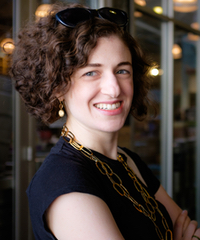 Rachel Patt is a PhD candidate in the Art History department at Emory University, where she is pursuing a doctorate in Roman art history under the supervision of Dr. Eric Varner. Rachel graduated with distinction from Stanford University in 2009 with a BA in Classics, concentrating in Latin. She also obtained an MA in Classical and Byzantine art history from the Courtauld Institute of Art in 2011. Prior to attending Emory, Rachel held multiple curatorial internships at the Getty Villa and the Museum of Fine Arts, Boston.
Rachel Patt is a PhD candidate in the Art History department at Emory University, where she is pursuing a doctorate in Roman art history under the supervision of Dr. Eric Varner. Rachel graduated with distinction from Stanford University in 2009 with a BA in Classics, concentrating in Latin. She also obtained an MA in Classical and Byzantine art history from the Courtauld Institute of Art in 2011. Prior to attending Emory, Rachel held multiple curatorial internships at the Getty Villa and the Museum of Fine Arts, Boston.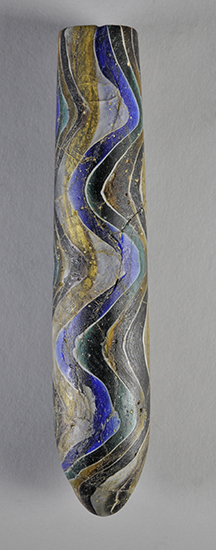
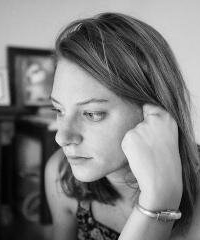 Courtney Rawlings received her BA in 2014 from the University of California, Riverside where she graduated with high honors in art history and philosophy. As an undergraduate, Courtney was awarded the Academic Excellence Award in Art History for her honors thesis: “Proprioception and Surrealism: Understanding Alberto Giacometti’s Surrealist Table within a Heideggarian Spatial Complex.” Courtney is currently a graduate student in Emory University’s Art History Department where she is pursuing a PhD in modern art and architecture. Courtney’s studies are largely concerned with experiment in architecture and design in Europe and America from the interwar period to the mid-century.
Courtney Rawlings received her BA in 2014 from the University of California, Riverside where she graduated with high honors in art history and philosophy. As an undergraduate, Courtney was awarded the Academic Excellence Award in Art History for her honors thesis: “Proprioception and Surrealism: Understanding Alberto Giacometti’s Surrealist Table within a Heideggarian Spatial Complex.” Courtney is currently a graduate student in Emory University’s Art History Department where she is pursuing a PhD in modern art and architecture. Courtney’s studies are largely concerned with experiment in architecture and design in Europe and America from the interwar period to the mid-century.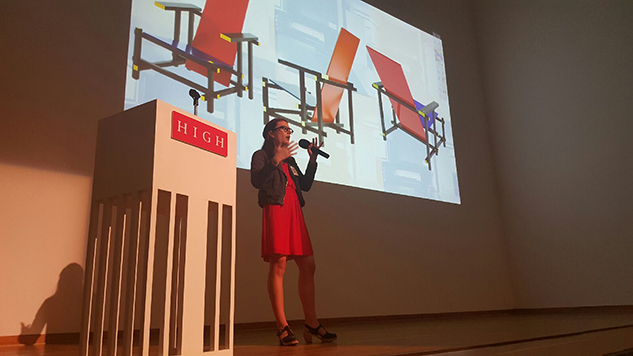
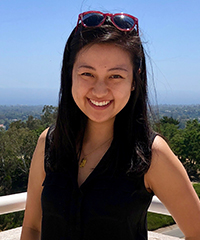 Julianne Cheng is a doctoral candidate in the Art History Department at Emory University. She received her BA in Art History and History from the University of California, Los Angeles in 2012 and her MA in Art History from Emory University in 2016. She participates in the excavation of the Sanctuary of the Great Gods on Samothrace under Dr. Bonna Wescoat, and is the manager of the Samothrace Archive at Emory. Her research interests are in ancient Greek iconography and pottery, particularly in Attic vase painting. She is currently writing her dissertation, “Making the Ordered Cosmos: The Gigantomachy in Archaic and Classical Athenian Vase Painting.”
Julianne Cheng is a doctoral candidate in the Art History Department at Emory University. She received her BA in Art History and History from the University of California, Los Angeles in 2012 and her MA in Art History from Emory University in 2016. She participates in the excavation of the Sanctuary of the Great Gods on Samothrace under Dr. Bonna Wescoat, and is the manager of the Samothrace Archive at Emory. Her research interests are in ancient Greek iconography and pottery, particularly in Attic vase painting. She is currently writing her dissertation, “Making the Ordered Cosmos: The Gigantomachy in Archaic and Classical Athenian Vase Painting.”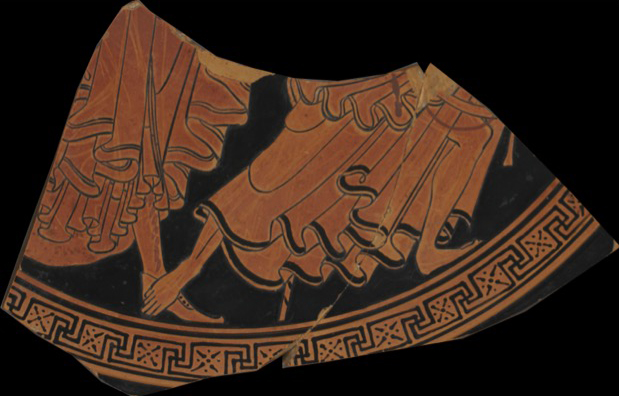
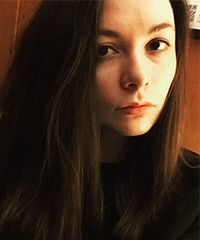 Nicole Corrigan received her BA in art history and museum studies from the University of Michigan in 2014. She entered the art history program at Emory University in Fall 2014 to study medieval art history with Elizabeth Pastan. Her qualifying paper, titled “La forma y suerte que esta en su santuario: Hybridity, Materiality, and Nuestra Señora de Guadalupe in Extremadura,” investigated how religious and artistic interactions between Christians and Muslims impacted the cult and display of the Marian cult statue of Guadalupe in Extremadura. She is currently working on her dissertation, “The Virgin Triumphant: Marian Images and the Medieval Cult of the Saints in Toledo Cathedral,” which examines the medieval cult images of the Virgin and Child in Toledo Cathedral as a case study for the rise and development of Marian devotion in thirteenth-century Castile.
Nicole Corrigan received her BA in art history and museum studies from the University of Michigan in 2014. She entered the art history program at Emory University in Fall 2014 to study medieval art history with Elizabeth Pastan. Her qualifying paper, titled “La forma y suerte que esta en su santuario: Hybridity, Materiality, and Nuestra Señora de Guadalupe in Extremadura,” investigated how religious and artistic interactions between Christians and Muslims impacted the cult and display of the Marian cult statue of Guadalupe in Extremadura. She is currently working on her dissertation, “The Virgin Triumphant: Marian Images and the Medieval Cult of the Saints in Toledo Cathedral,” which examines the medieval cult images of the Virgin and Child in Toledo Cathedral as a case study for the rise and development of Marian devotion in thirteenth-century Castile.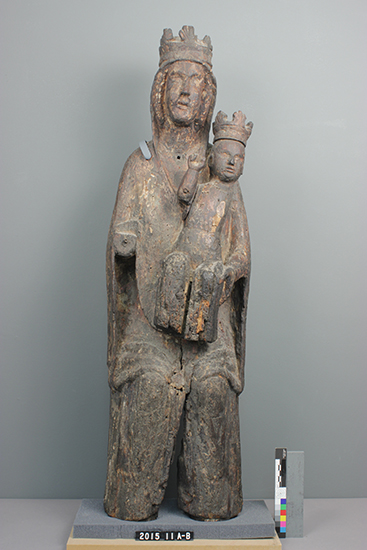
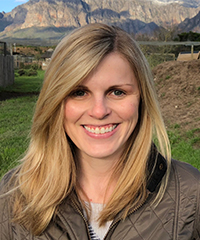 Kimberly Schrimsher is a PhD student at Emory University working under the advisement of Jean Campbell and Sarah McPhee. She is writing her dissertation on the working practices of the Baroque Italian painter Guercino. Schrimsher received her master’s degree in art history from the Courtauld Institute of Art in London. She has a BA in art history from Emory University where she graduated summa cum laude with highest honors on her thesis.
Kimberly Schrimsher is a PhD student at Emory University working under the advisement of Jean Campbell and Sarah McPhee. She is writing her dissertation on the working practices of the Baroque Italian painter Guercino. Schrimsher received her master’s degree in art history from the Courtauld Institute of Art in London. She has a BA in art history from Emory University where she graduated summa cum laude with highest honors on her thesis.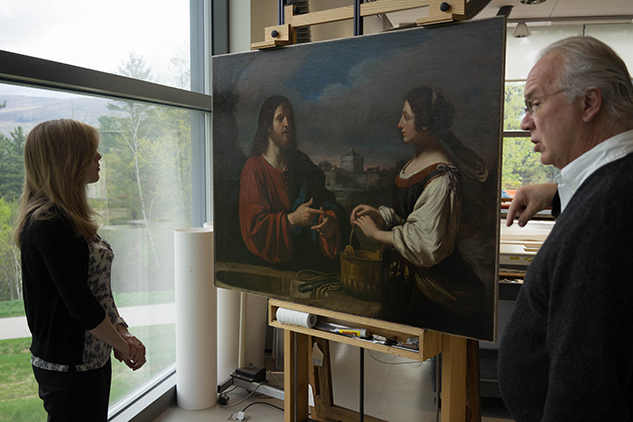
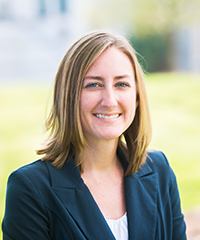 Ashley Eckhardt is a PhD candidate at Emory University specializing in ancient Greek art and archaeology. Her dissertation, entitled “The Crafting of Cult Statues in the High Hellenistic Period,” examines the production of cult statues and temples across the Mediterranean in the second century BCE. Prior to arriving at Emory, Ashley earned an MA in art history and archaeology from Washington University in St. Louis, an M.A. in public history from Loyola University Chicago, and a B.A. in history from St. Norbert College.
Ashley Eckhardt is a PhD candidate at Emory University specializing in ancient Greek art and archaeology. Her dissertation, entitled “The Crafting of Cult Statues in the High Hellenistic Period,” examines the production of cult statues and temples across the Mediterranean in the second century BCE. Prior to arriving at Emory, Ashley earned an MA in art history and archaeology from Washington University in St. Louis, an M.A. in public history from Loyola University Chicago, and a B.A. in history from St. Norbert College.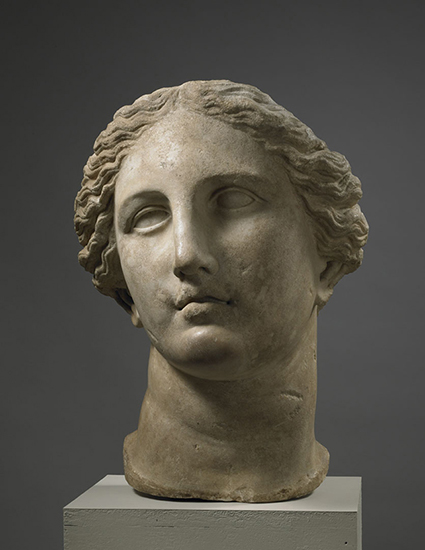
 Laura Somenzi is currently a PhD candidate in the Art History department at Emory University and a Doctoral Fellow at the Kunsthistorisches Institut in Florenz. Laura’s research considers the public function of painting in Late Medieval and Renaissance Italy and her dissertation project is titled, “Treasuries, Invention and the Teodelinda Chapel in Monza.”
Laura Somenzi is currently a PhD candidate in the Art History department at Emory University and a Doctoral Fellow at the Kunsthistorisches Institut in Florenz. Laura’s research considers the public function of painting in Late Medieval and Renaissance Italy and her dissertation project is titled, “Treasuries, Invention and the Teodelinda Chapel in Monza.”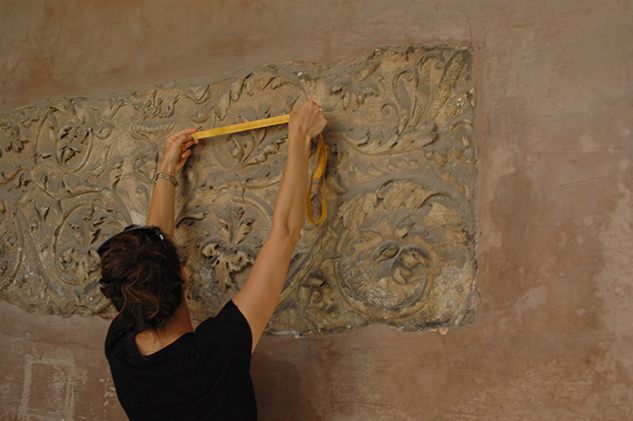
 John Witty is a PhD candidate studying early Italian Renaissance Art at Emory University under the guidance of Dr. Jean Campbell. He is pursuing a minor in Italian Baroque art with Dr. Sarah McPhee. Originally from Miami, Florida, John graduated cum laude from Washington University in St. Louis with a Bachelor of Fine Arts in Printmaking and Drawing, completing additional majors in German and Art History. Upon graduation, John was awarded the Mark S. Weil Prize for Distinction in Art History and Museum Practice. Before beginning a Masters degree in Art History at Williams College, John worked as an intern at the National Gallery of Art in Washington. He has also held internships at the Peggy Guggenheim Collection, Venice, the John and Mable Ringling Museum of Art in Sarasota, Florida, the Williams College Museum of Art, and the Sterling and Francine Clark Art Institute in Williamstown.
John Witty is a PhD candidate studying early Italian Renaissance Art at Emory University under the guidance of Dr. Jean Campbell. He is pursuing a minor in Italian Baroque art with Dr. Sarah McPhee. Originally from Miami, Florida, John graduated cum laude from Washington University in St. Louis with a Bachelor of Fine Arts in Printmaking and Drawing, completing additional majors in German and Art History. Upon graduation, John was awarded the Mark S. Weil Prize for Distinction in Art History and Museum Practice. Before beginning a Masters degree in Art History at Williams College, John worked as an intern at the National Gallery of Art in Washington. He has also held internships at the Peggy Guggenheim Collection, Venice, the John and Mable Ringling Museum of Art in Sarasota, Florida, the Williams College Museum of Art, and the Sterling and Francine Clark Art Institute in Williamstown.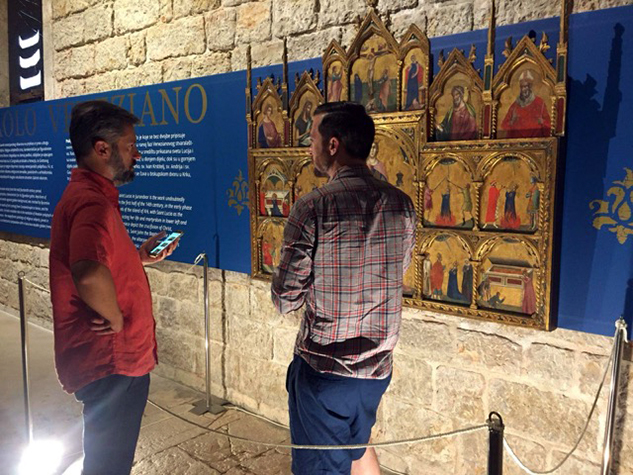
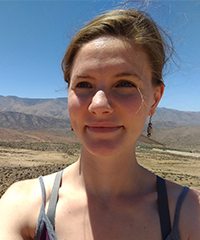 Catherine Barth is a PhD Candidate in art history at Emory University, in Atlanta, GA. She received her MA from Emory in 2016 and her BA from William & Mary in 2012. Catherine has previously held Mellon Graduate Research and Object-Centered Curatorial Fellowships in the Photography Department at the High Museum of Art and is currently the Graduate Curatorial Intern in Photographs at the J. Paul Getty Museum. Catherine is writing a dissertation on the Italian-born, American photographer, Frederick Sommer, exploring his position in the art world at mid-century and his relationships with Ansel Adams and Edward Weston.
Catherine Barth is a PhD Candidate in art history at Emory University, in Atlanta, GA. She received her MA from Emory in 2016 and her BA from William & Mary in 2012. Catherine has previously held Mellon Graduate Research and Object-Centered Curatorial Fellowships in the Photography Department at the High Museum of Art and is currently the Graduate Curatorial Intern in Photographs at the J. Paul Getty Museum. Catherine is writing a dissertation on the Italian-born, American photographer, Frederick Sommer, exploring his position in the art world at mid-century and his relationships with Ansel Adams and Edward Weston.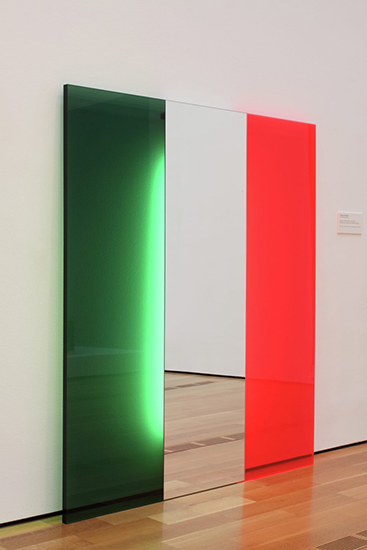
 Kira Jones graduated in 2008 from the University of Georgia with bachelor’s degrees in classical culture and Latin, at which point she decided to pursue her PhD in Greek and Roman art history. She has excavated with Dr. Bonna Daix Wescoat at the Sanctuary of the Great Gods in Samothrace and pursues a number of interests outside Greece and Rome, such as the impact of antiquity on later periods and the art of the Ancient Americas. She completed her PhD in Art History at Emory University in 2018. Her dissertation is titled, “Domitian and Minerva at Rome: Iconography and Divine Sanction in the Eternal City.”
Kira Jones graduated in 2008 from the University of Georgia with bachelor’s degrees in classical culture and Latin, at which point she decided to pursue her PhD in Greek and Roman art history. She has excavated with Dr. Bonna Daix Wescoat at the Sanctuary of the Great Gods in Samothrace and pursues a number of interests outside Greece and Rome, such as the impact of antiquity on later periods and the art of the Ancient Americas. She completed her PhD in Art History at Emory University in 2018. Her dissertation is titled, “Domitian and Minerva at Rome: Iconography and Divine Sanction in the Eternal City.”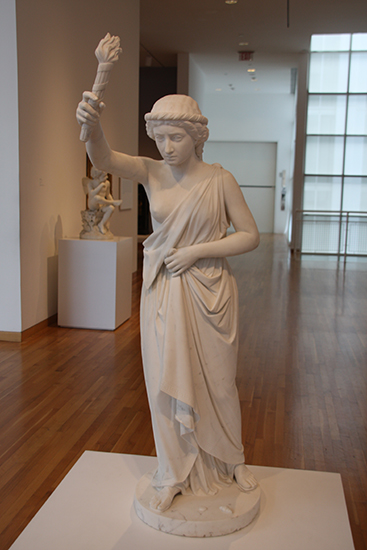
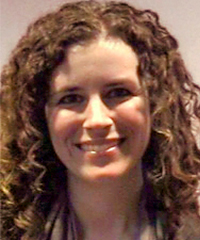 Andi McKenzie completed her PhD Art History at Emory University in 2018. She is now Curator of Works on Paper at the Michael C. Carlos Museum. Her most recent exhibitions include Conserving the Memory: Fratelli Alinari Photographs of Rome and Mirroring the Saints: The Jesuit Wierix Collection from De Krijtberg, Amsterdam. McKenzie’s research interests focus on the intersections between Catholicism and indigenous spirituality in Latin American art, and printmaking in early modern Germany and the Low Countries. McKenzie received her BA in Studio Art from Berry College and her MA in Art History from the University of South Florida.
Andi McKenzie completed her PhD Art History at Emory University in 2018. She is now Curator of Works on Paper at the Michael C. Carlos Museum. Her most recent exhibitions include Conserving the Memory: Fratelli Alinari Photographs of Rome and Mirroring the Saints: The Jesuit Wierix Collection from De Krijtberg, Amsterdam. McKenzie’s research interests focus on the intersections between Catholicism and indigenous spirituality in Latin American art, and printmaking in early modern Germany and the Low Countries. McKenzie received her BA in Studio Art from Berry College and her MA in Art History from the University of South Florida.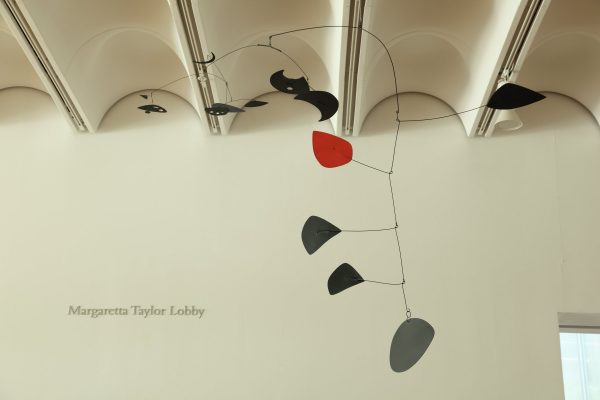
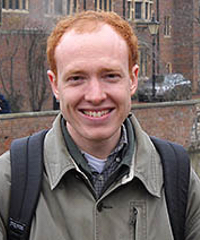 Elliott Wise received his PhD in Northern Renaissance Art History at Emory University in 2016. His research focuses on the way art functions in the devotion, exegesis, and religious practice of late medieval and Early Modern Europe. He is particularly interested in Eucharistic, liturgical, and Marian imagery and the way it is nuanced by the spiritual traditions of the monastic and mendicant orders. Wise is currently Assistant Professor of Medieval and Northern Renaissance Art History at Brigham Young University.
Elliott Wise received his PhD in Northern Renaissance Art History at Emory University in 2016. His research focuses on the way art functions in the devotion, exegesis, and religious practice of late medieval and Early Modern Europe. He is particularly interested in Eucharistic, liturgical, and Marian imagery and the way it is nuanced by the spiritual traditions of the monastic and mendicant orders. Wise is currently Assistant Professor of Medieval and Northern Renaissance Art History at Brigham Young University.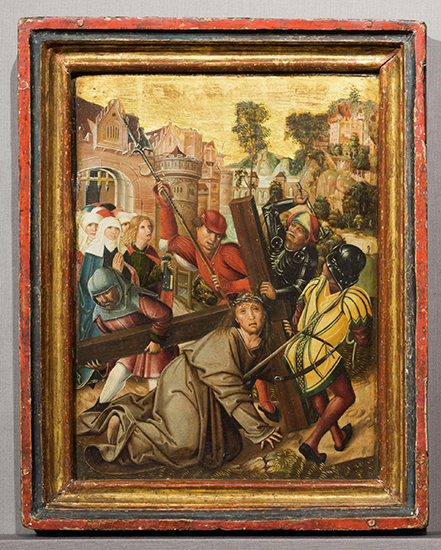
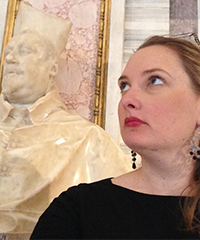 Cecily Boles is a doctoral candidate in Art History at Emory University, Atlanta, Georgia, under the guidance of Dr. Sarah McPhee. Her research interest centers on Early Modern sculpture, particularly portraiture. She received her BA From the University of California, Riverside (2005) in French Literature and Art History Administrative Studies. Cecily interned at the Los Angeles County Museum of Art, California Museum of Photography, and The Phillips Collection. Later she worked in Education at the Smithsonian American Art Museum. In 2009, she received her MA from the University of Toronto in Art History, which laid the groundwork for her article: “The folded mozzetta: an overlooked motif in the portraits of Gian Lorenzo Bernini,” in Sculpture Journal 20.2 (2011).
Cecily Boles is a doctoral candidate in Art History at Emory University, Atlanta, Georgia, under the guidance of Dr. Sarah McPhee. Her research interest centers on Early Modern sculpture, particularly portraiture. She received her BA From the University of California, Riverside (2005) in French Literature and Art History Administrative Studies. Cecily interned at the Los Angeles County Museum of Art, California Museum of Photography, and The Phillips Collection. Later she worked in Education at the Smithsonian American Art Museum. In 2009, she received her MA from the University of Toronto in Art History, which laid the groundwork for her article: “The folded mozzetta: an overlooked motif in the portraits of Gian Lorenzo Bernini,” in Sculpture Journal 20.2 (2011).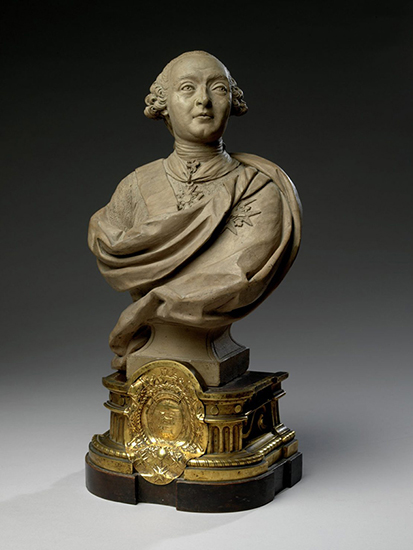
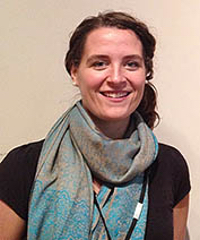 Ashley Laverock graduated in 2016 with a PhD in Art History at Emory University, Atlanta, Georgia. She received her Bachelor of Arts in Art History from Southern Methodist University and her Master of Arts in Art History from Tufts University. Her dissertation focuses on the visual hagiography of St. Margaret of Antioch in thirteenth-century stained glass across Europe. As the 2012 recipient of the Mellon-Funded Graduate Fellowship in Object-Based Curatorial Research, Ashley studied Tilman Riemenschneider’s St. Andrew in the High Museum of Art’s permanent collection. To complete her research she traveled to Berlin, Germany, where she consulted with experts on German sculpture, and to Würzburg, Germany, where Riemenschneider lived and worked.
Ashley Laverock graduated in 2016 with a PhD in Art History at Emory University, Atlanta, Georgia. She received her Bachelor of Arts in Art History from Southern Methodist University and her Master of Arts in Art History from Tufts University. Her dissertation focuses on the visual hagiography of St. Margaret of Antioch in thirteenth-century stained glass across Europe. As the 2012 recipient of the Mellon-Funded Graduate Fellowship in Object-Based Curatorial Research, Ashley studied Tilman Riemenschneider’s St. Andrew in the High Museum of Art’s permanent collection. To complete her research she traveled to Berlin, Germany, where she consulted with experts on German sculpture, and to Würzburg, Germany, where Riemenschneider lived and worked.